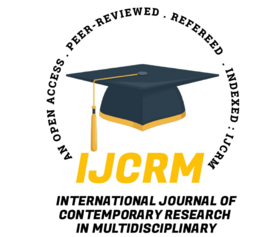International Journal of Contemporary Research In Multidisciplinary, 2025;4(3):281-284
Mathematical Modeling and Its Applications in Aeronautical Engineering: Enhancing Aircraft Design, Performance, And Flight Safety
Author Name: Prachi Dilip Magar;
Abstract
Aeronautical science is fundamentally intertwined with mathematics, which serves as a cornerstone in the design, development, and operation of aircraft. Mathematical principles are essential for understanding and applying the core concepts of aerodynamics, structural integrity, and performance optimization. In aerodynamics, mathematics helps model airflow, predict lift and drag forces, and enhance the efficiency of propulsion systems. Structural analysis relies on mathematical frameworks to assess the strength and stability of aircraft materials, ensuring safety and durability. Additionally, mathematical models play a crucial role in the design of guidance systems for accurate navigation, orbital mechanics for mission planning, and flight dynamics for predicting and controlling aircraft behavior. Through its broad applications, mathematics enables the advancement of aeronautical technology, ensuring precision, efficiency, and safety in modern aviation and aerospace engineering. Beyond design and simulation, mathematical modeling supports decision-making in maintenance scheduling, risk assessment, and environmental impact analysis. Interdisciplinary collaboration between mathematicians, engineers, and computer scientists further amplifies innovation, as complex systems are better understood and optimized. As the aviation industry continues to evolve, the role of mathematics becomes increasingly vital in integrating emerging technologies such as autonomous flight, smart materials, and sustainable fuel systems.
Aim: The aim of this study is to highlight the critical role of mathematical modeling in aeronautical engineering, particularly in enhancing aircraft design, optimizing performance, and improving flight safety across various domains such as aerodynamics, structural integrity, and flight dynamics.
Methodology: The paper utilizes a theoretical and analytical approach to explore the application of mathematical principles in key areas of aeronautical science. It draws on existing mathematical frameworks, computational models, and interdisciplinary methods to demonstrate their practical relevance in real-world aviation scenarios.
Results: The findings illustrate that mathematical modeling significantly contributes to the precision and efficiency of aircraft systems. It enables accurate predictions of aerodynamic behavior, structural performance, and navigational accuracy. Moreover, it supports maintenance planning, risk analysis, and the integration of emerging technologies like autonomous systems and sustainable fuels.
Conclusion: Mathematics is indispensable in advancing aeronautical engineering. Its broad and evolving applications drive innovation, safety, and sustainability in modern aviation. Continued interdisciplinary collaboration will further enhance the impact of mathematical modeling in solving complex aerospace challenges.
Keywords
Mathematical modeling, Aeronautical engineering, Aircraft design, Aerodynamics, Structural analysis, Performance optimization





